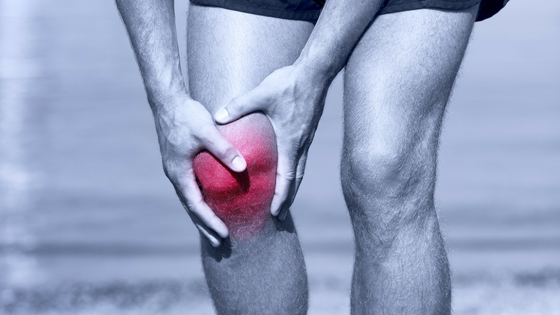
Sovereign House
Pain Solutions
What Causes Knee Osteoarthritis?

Osteoarthritis affects the weight-bearing joints. It’s usually found in the
-
Neck
-
Low back
-
Hips
-
Knees
Most doctors consider osteoarthritis a normal part of aging, but not everyone is affected equally.
Studies of the knee have found that osteoarthritis is caused by muscle weakness (1,2). It is reasonably safe to assume that the same mechanism exists in other locations (osteoarthritis of the hands is probably different since the hands are not weight-bearing).
https://www.youtube.com/watch?v=rE43yM-hWS0
Muscles Control Joints
All movement is controlled by opposing muscles.
In the knee, the quadriceps and hamstrings do most of the work. While we recognise that the muscles move the joint, what is less obvious is that they also prevent movement. Muscles are the engine and the brake.
Reflexes make muscles contract in response to stretch. This prevents damage to joints by limiting excessive, unnecessary or damaging movements.
Every time you walk down a step, your quadriceps has to feel how much stretch it’s under and provide exactly the right amount of counter-force to stop you tumbling down the stairs.
If the quadriceps is weak, it can’t protect the joint as efficiently as it should. Excessive movement results in wear and tear, or osteoarthritis.
Fortunately, it’s easy to test for weakness in the quadriceps if you know how.
Once we know the quadriceps is weak, the knee-jerk (pardon the pun) response is to recommend exercise.
Sadly, this has limited or lack-lustre results because most weakness is not caused by lack of exercise and therefore can’t be fixed by exercise (4).
Researchers have found that muscle strength often fails to return to normal after most knee injuries and surgery, even with extensive rehab and exercises (5).
They wrongly presume that the injury caused the weakness, whereas it is weakness that predisposed to the injury.
If exercise were the answer then Andy Murray would not need a new hip and elite athletes would not get osteoarthritis, but they do.
Most muscle weakness is actually muscle inhibition.
With inhibition, the nervous system has a limited ability to turn the muscle on. The muscle itself isn’t weak, it’s just not getting the stimulation it should. The only way to restore strength is to find the cause of the inhibition.
Fortunately, it is easy to identify muscle inhibition at the knee if you are skilled at muscle testing.
Watch how the body heals itself when you find the cause of osteoarthritis:
https://www.youtube.com/watch?v=Q53oQUpFub8
*NB. Results shown may not be typical. Everyone is different.
References:
(1) Neuromuscular quadriceps dysfunction prior to osteoarthritis of the knee.
(2) Quadriceps Weakness in Individuals with Coexisting Medial and Lateral Osteoarthritis.
(3) Quadriceps Strength and Osteoarthritis of the Knee
(4) Effects of strength training on the incidence and progression of knee osteoarthritis
(5) Muscle Inhibition following Knee Injury and Disease